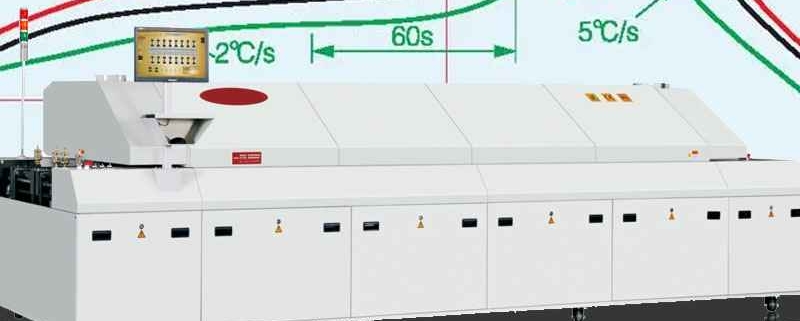Reflow oven temperature during SMT production assembly
SMT production assembly involves heating the PCB in a reflow oven. Oven temperatures are high, ranging to about 260°C. This heat spreads over the surface of the PCB. In the event thermal imbalance exists, such that during the soldering, substantial temperature differences are generated between two points on the PCB’s surface (ΔT) (more than 7°C), the PCB will experience thermal shock during heating in the oven. The result of this thermal shock may be PCB warpage, insufficient soldering for certain components, and other defects.
This phenomenon is greatly affected by component location on the PCB. Parts on the PCB are heterogeneous and may include small passives (resistors, capacitors, inductors) whose heat signature is low, together with large actives (BGAs, LGAs) whose heat signature is high. The concentration, on one hand, of components whose heat signature is high in a certain area of the PCB, and on the other hand, the concentration of components whose heat signature is low in another area of the PCB, may cause significant temperature differences between those two areas and instigate thermal shock.
Therefore, during PCB design, it is very important to ensure thermal balance is maintained on the PCB. One recommended method to prevent thermal shock is to uniformly distribute components whose soldering temperature is high across the PCB surface, rather than place them all in a certain single area.
Another way to maintain thermal balance is to ensure the PCB layer stack-up is symmetrical, that is, ensuring the copper and ground layers are evenly divided from the center of the PCB toward the top and bottom layers of the board (FIGURE 2).
FIGURE 2. PCB layer stack-up design.




